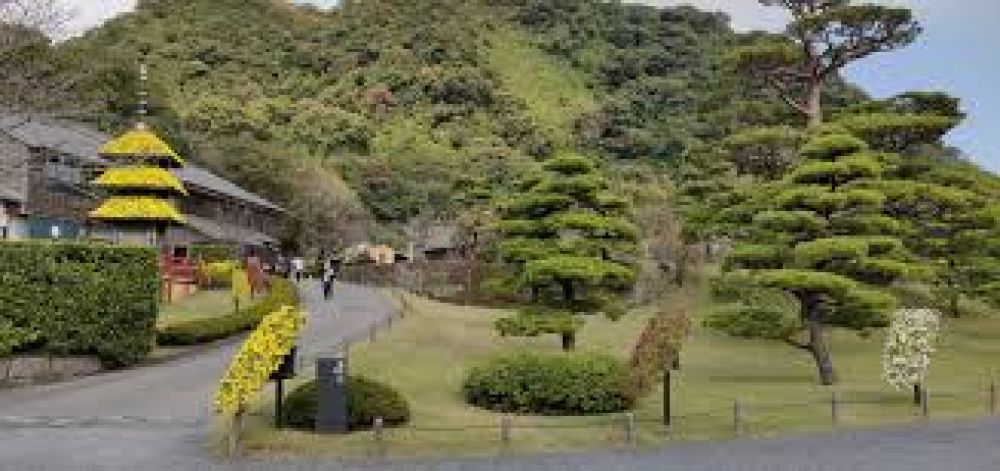

Senganen Garden, also known as Sengan-en, is a Japanese garden located in the coastal city of Kagoshima, Japan. The garden presents a splendid combination of natural beauty and historical significance, which has been attracting visitors for centuries. The history of Senganen Garden as a tourist destination is deeply entwined with the history of the Shimazu clan, one of the most influential samurai clans of the region.
The Senganen Garden was constructed in 1658 by the 19th head of the Shimazu clan, Shimazu Mitsuhisa. Originally designed as a villa for the powerful Shimazu family, the garden features breathtaking views of the Sakurajima volcano and Kagoshima Bay, framing nature as a living painting. It is an exemplary representation of the traditional Japanese shakkei (borrowed scenery) technique, where the background landscape is incorporated into the garden's design.
During the Edo period (1603–1868), the garden was primarily a private retreat for the Shimazu clan. However, with the Meiji Restoration in 1868 and the subsequent modernization of Japan, the garden slowly began to open up to the public. In the late 19th century, the area saw its first international visitors, including foreign dignitaries and intellectuals attracted by the region's rich history and the allure of Sengan-en's gardens. By the early 20th century, Senganen had become a celebrated tourist spot for both Japanese and international travelers.
In 2015, Senganen Garden, along with related sites of Japan’s Meiji Industrial Revolution, was inscribed as a UNESCO World Heritage Site. This recognition increased the garden's visibility and prestige, leading to a significant boost in tourism. Visitors are now drawn not only by the garden's natural beauty but also by its historical importance as a testament to Japan's rapid industrialization in the 19th century and the role played by the Shimazu family in this transformation.
In recent years, eco-tourism and cultural experiences have become significant trends at Senganen Garden. Tourists are increasingly seeking authentic experiences that allow them to connect with the history and culture of the region. The garden caters to these trends by offering cultural workshops, tea ceremonies, and guided history tours, which explain the intricate connection between the garden, the Shimazu clan, and the broader history of Kagoshima.
Moreover, the rise of social media has seen an increase in visitor engagement, with many guests sharing their experiences online, making the garden's scenic beauty known worldwide. Another emerging trend is the combination of tourism with local festivals and events, such as the annual Shimadzu Satsuma Daimyo Festival, which provides tourists with immersive cultural experiences.
As an important cultural asset, Senganen Garden places great emphasis on conservation and sustainability. Efforts are made to preserve the natural environment and maintain the garden's historical features. These conservation measures are also part of the site's appeal to tourists who value sustainability and environmental stewardship in their travel choices.
Today, Senganen Garden stands as a testament to the confluence of nature, history, and culture. It continues to attract visitors from all over the world, offering them a window into Japan's past and an opportunity to enjoy its timeless landscapes.